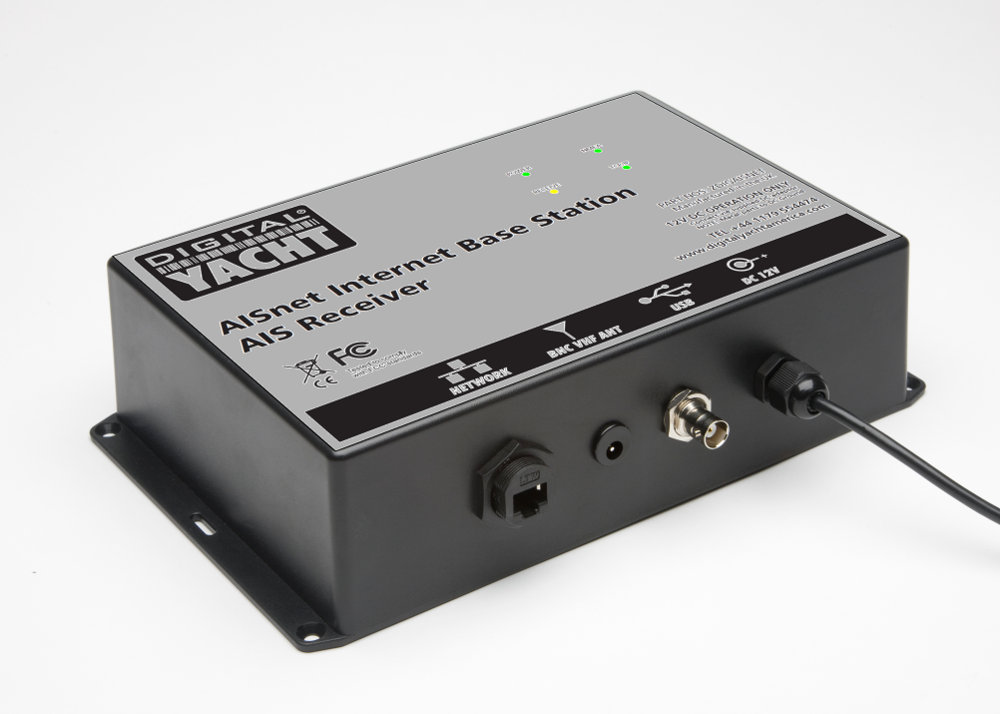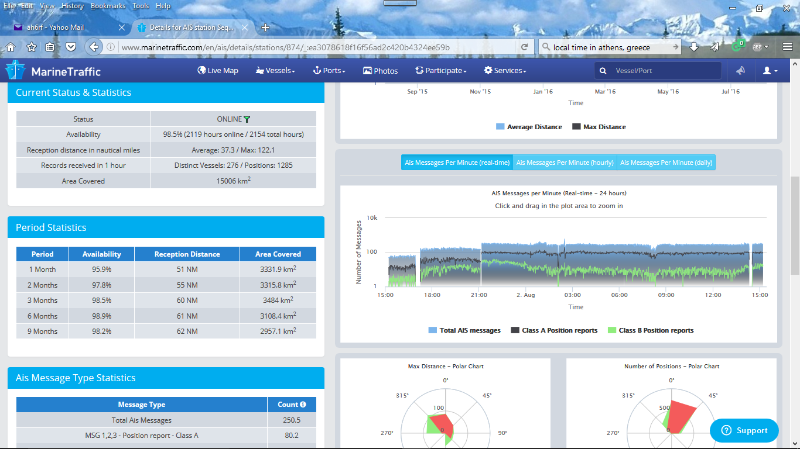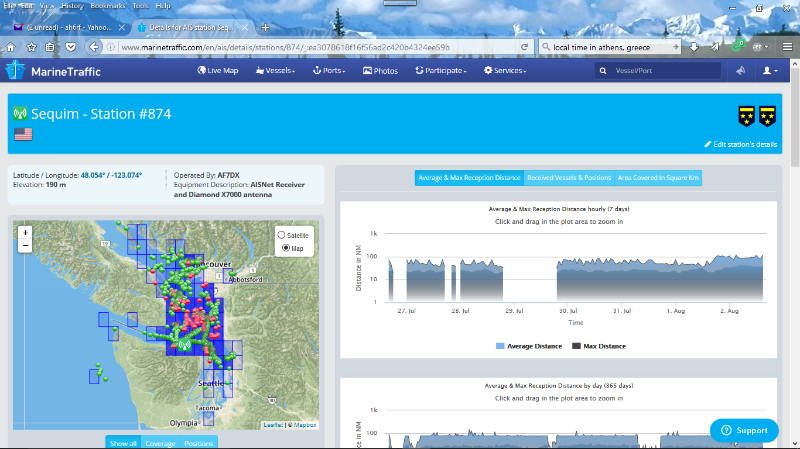Arguably the most beautiful sailing location in the USA, it is no surprise that there are always lots of pleasure and commercial vessels in the Puget Sound. This week, we helped one of our customers to upgrade his shore based AIS reception station to one of our latest AISNet units and in so doing helped to improve the AIS coverage, in Puget Sound, of Marine Traffic the world’s largest online AIS network.
Ralph an experienced radio ham, whose home on the Olympic Pennisular is perfect for good AIS reception, contacted us when his initial attempts to send data to Marine Traffic failed. His old setup which required a PC to be permanently on, had been working well for some time but he hoped the new AISNet would free up the PC and reduce power consumption. It quickly became clear that his AISNet was receiving AIS targets and after setting up a test server, in our UK office, we also confirmed that the UDP and TCP data feeds were OK.
We have been selling AISNets since 2010, so they are a well proven design, but earlier this summer we released a new version that had a completely new AIS receiver and Network adaptor. Despite the fact that we had done lots of testing in the lab, including sending data to different web servers, there was a nagging doubt that perhaps this new design was not compatible in some way with Marine Traffic. Fortunately the technical support team at Marine Traffic are really fast and efficient and over the course of a couple of nights (due to the time differences), we managed to test and get Ralph’s unit working, by just a simple change to the TCP mode setting.
On the original AISNet we had always used and recommended “TCP Mixed Mode” for Marine Traffic servers, but with the new AISNet we found that we had to select “TCP Client Mode” or “UDP Mode” to make everything work OK. With the new settings made, Ralph’s data started streaming in and by looking at the statistics found that his new AISNet was giving significantly better reception coverage than his previous setup; 15000km² compared to 3500km².
The improved receiver sensitivity of our AISNet, plus the fact that it was a true dual channel receiver, simultaneously monitoring both AIS channnels and never missing a message, all contributed to the improved coverage. In fact AISNet was on average receiving nearly four times the number of targets per hour compared to Ralph’s old system. As you can imagine, Ralph was very pleased, as were Marine Traffic who now have much better coverage of this area and ultimately everyone sailing in the Puget Sound will benefit from an even better free online AIS service.









